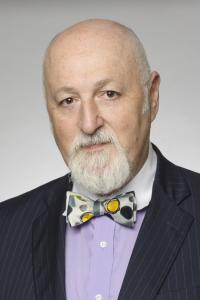AI Streamlines Complex Dental Clinic Scheduling
The scheduling of dental students who work in a busy teaching clinic is no simple task. Schedules need to take into account academic classes, clinical rotations, patient appointments, and faculty availability for close to 200 students. Until recently, the work has mostly been done by clinic staff, charged with piecing together the jigsaw puzzle in order to ensure that students develop the clinical competencies that they require for graduation and patients are able to access the services they
require in a timely manner.
This year, the Columbia College of Dental Medicine took a bold step toward solving that challenge, using artificial intelligence to dramatically streamline the process.
Steven Erde, MD, PhD, assistant professor of Oral Health Informatics at CUMC and Marc Pusey, CDM’s Chief of Software Architecture and Engineering, collaborated to create a complex AI prompt that is able to synthesize the many moving parts of the clinic schedule in order to achieve the most efficient resources while reducing some of the administrative burden on clinic staff.
“For years, creating schedules for our DDS and postgraduate students meant juggling a dizzying number of constraints—clinic hours, class times, rotation requirements, and special cases like faculty vacations,” Pusey said. “We had rules upon rules, layered on top of each other, and no matter how much we automated, there was still a huge manual component.”
To accomplish the task, Pusey and Erde harnessed a large language model (LLM) to generate not just the schedule itself, but a custom program to produce it. By feeding the AI a detailed prompt—about 800 words long—that described all the rules, exceptions, and required output formats, they were able to generate a year’s worth of clinic availability for all of the student clinicians in the DDS program.
“The prompt was incredibly intricate,” Pusey said. “We had to describe exactly what we wanted, down to the column order in the output file. And because the prompt is expressed in English, we found ourselves refining how we expressed our business rules. In the end, we didn’t just get a better schedule—we got a clearer understanding of our own requirements.”
The goal of this new approach is to replace a labor-intensive, error-prone process with a one-time AI-assisted generation of the schedule, which is then uploaded into Epic’s Wisdom module for daily use. Pusey notes that the process of refining the prompt is an ongoing one. The schedule that was generated using the original prompt had mistakes. “Some of those were down to incorrectly-specified requirements— in other words, human error,” said Pusey. “But the AI made errors too, which required human clean up after we had uploaded to EPIC.” While adjustments still happen throughout the year, the heavy lift of initial schedule creation is now largely automated.
Erde sees this as part of a broader trend in operational innovation. CDM was a leader in the integration of medical and dental information in Epic, the electronic health record in use at Columbia University Irving Medical Center. “This is a great example of using AI to replace a complicated but repetitive process with an integrated solution. We’ve been building custom tools for years to make Epic work for a dental school environment. This scheduling project is just another arrow in the quiver—and one that could benefit a lot of other schools.”
In fact, other dental schools have already taken notice. Columbia has been consulting with institutions including Ohio State and the University of Mississippi on various Epic integrations, and interest in the AI scheduling process is growing.
“All dental schools face similar scheduling challenges,” Erde said. “Some are happy to do it manually, but once they see what’s possible, they start thinking differently.”
Pusey and Erde are confident that, as AI models advance, the scheduling prompt can be refined and improved. The project also lays the groundwork for future innovations—tools that could help students schedule their own patients more efficiently, integrate with grading systems, and potentially serve as a model for other healthcare training programs.
“This was about more than just making a schedule,” Pusey said. “It was about learning how to work with AI, stretching its capabilities, and reimagining how we solve problems. And that’s something we’re just getting started with.”

